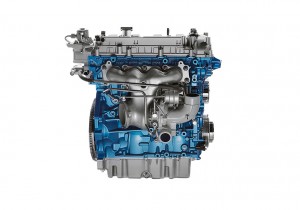Call it the automotive equivalent of the Hatfields and McCoys.
It would seem that proponents of diesel technology for small cars in the U.S. will always be at war with those who don’t see a future for downsized “oil burners” in a market reluctant to pay the premium, despite the technologies fuel-efficient advantages.
The battle over how to improve fuel economy – hybrids, extended-range electric, diesel, fuel cells – continues to rage, but three panelists at the Management Briefing Seminars, an annual industry confab in Traverse City, Michigan, all agreed on one key point: the internal combustion engine will continue be a big part of the automotive landscape for the foreseeable future.
But will the majority of them run on gasoline or will diesel make a bigger dent in the U.S. market?
On one side is Johannes-Joerg Rueger, senior vice president of diesel engineering for Bosch, a major supplier of diesel technology based in Germany, who argued that, “Consumers in the U.S. have been embracing clean diesels,” Rueger said, pointing to sales increases for diesels from Volkswagen and other German automakers.
Just don’t expect Barb Samardzich from Ford or Larry Nitz from General Motors to jump on the bandwagon, at least when it comes to diesels in small cars.
Samardzich insisted the economics just don’t work. Because of the extra costs associated with the hardware required to bring a diesel into compliance with the more stringent U.S. regulations, Ford would need to price the diesel option at $2,500 to $3,000 for a Ford Fiesta.
“It takes a very long time for that to pay back,” Samardzich said.
Volkswagen essentially rolls the extra cost of the diesel into the cost of its cars. For example, a diesel Jetta starts at $22,830, which is actually less than a comparable Jetta SEL.
Samardzich insisted that she is neutral on the subject of small diesels, but Ford can’t balance the economic equation.
She added that Ford has designed its newest vehicles to accept the wide variety of engines it offers in all markets, so if consumers demand them, the company could introduce a diesel as quickly as it could get approval on emissions.
Another factor is higher prices for diesel. Typically, diesel costs about 20 cents more per gallon, Rueger acknowledged. When gas prices skyrocketed to more than $4 per gallon in 2008, diesel prices were about $1 higher, but Rueger sees that as a blip, not the norm.
Ford is pushing its EcoBoost technology as the best fuel economy solution for the near term. Combining turbocharging and direct injection, Samardzich said the engines are an affordable alternative to more expensive options such as hybrids or extended-range electrics.
Rueger also took a shot at battery electrics, saying that batteries have a long way to go before they offer the same energy capacity as a fuel tank for gasoline, diesel or even natural gas.
Nitz said that while diesel helps with fuel economy, it doesn’t do as much to reduce dependence on petroleum. Currently, 96 percent of the fuel used for transportation comes from petroleum. In the next 20 years, the projections call for additional capacity equivalent to six Saudi Arabias, he said.
“When we look at it from a sustainable perspective, there’s got to be an alternative,” he said.
With that in mind, Nitz said he thinks ethanol holds the most promise.
“Ethanol is probably the best hope for near-term energy diversity,” Nitz said.
But in terms of making better use of the fuel its vehicles use, Nitz said GM remains committed to mild hybrids that use a belt-driven alternator/starter. He said the company planned to introduce an improved version of the system later this year.
Of course, GM is spending considerable resources developing the Volt E-REV, which goes into production at the end of the year. The Volt will have a 40-mile range on electricity, then a gasoline engine will provide an additional 300 miles before it needs to be refueled.
Nitz said the key to the Volt is that it can make full use of its limited battery capacity because there is no anxiety about running out of electrical juice while on the road.
“The idea that you’re going to get home with zero miles left is impractical,” Nitz said in reference to pure electric vehicles such as its own EV1 from the ‘90s and the Nissan Leaf, which will begin production about the same time as the Volt.
Nitz said that GM’s experience with the EV1 showed that the limited range was the biggest problem customers had with the car.
“It presented a range-anxiety equation to customers that was not acceptable,” Nitz said.
Rueger said electric vehicles such as Leaf and Volt are not a good value.
“Currently, the electric vehicle is not competitive cost wise,” Rueger said.

